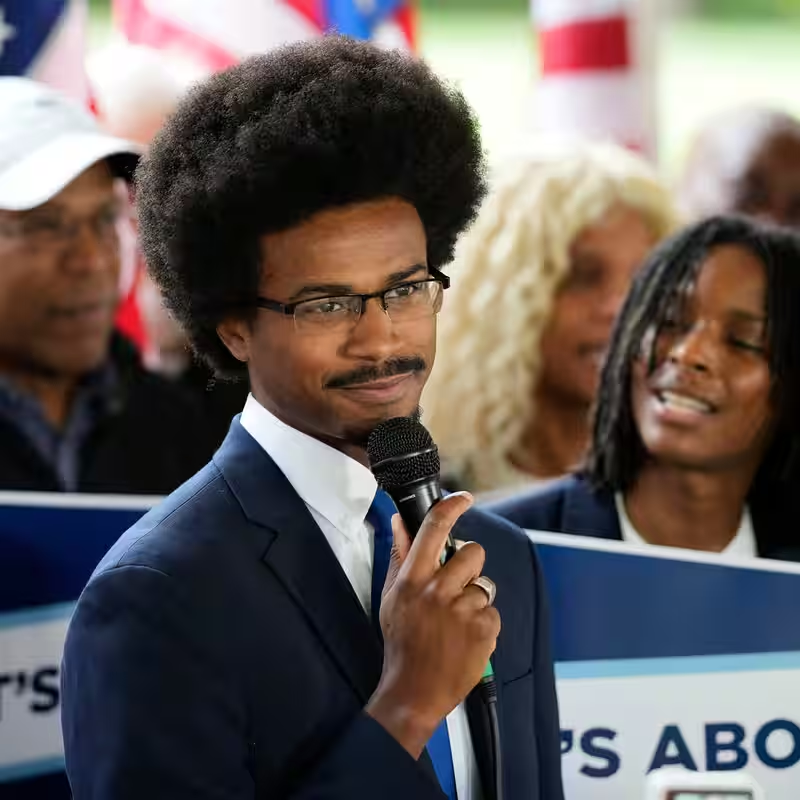Table of Contents
- The Generational Divide Shaking the Party
- Biden’s Legacy and the Lingering Age Question
- Primary Battles: Youth vs. Experience
- What Voters Really Think
- The Path Forward for Democrats
- Sources
The Generational Divide Shaking the Party
The Democratic Party is facing an internal crisis that threatens to overshadow its policy platform: a bitter, public feud over the age of its leadership. Dubbed the “Democratic Age Wars,” this conflict is no longer a quiet concern whispered in backrooms but a central theme in primaries and a major factor in voter sentiment heading into the 2026 midterms.
The core of the issue is a stark reality: the party is perceived as a gerontocracy, a system ruled by its eldest members. This perception has become a significant political liability. As one commentator bluntly stated, “The Democratic Party clearly has an age issue. Many people have referred to it as a gerontocracy crisis” .
Biden’s Legacy and the Lingering Age Question
The shadow of President Joe Biden, who served from 2021 to 2025 and was born in 1942, looms large over this debate . His tenure as the nation’s oldest sitting president brought the issue of cognitive fitness and generational representation to the forefront of American politics. Even after his departure from the 2024 race, the question remains: has the party become too comfortable with its aging leadership?
The problem extends far beyond the presidency. In the House of Representatives, a striking trend has emerged. “One House Democrat said it is ‘insane’ that more than half their colleagues 75 and older are seeking re-election” . This reluctance to pass the torch is fueling frustration among a new generation of Democratic voters and activists who feel their voices and concerns are being ignored.
Primary Battles: Youth vs. Experience
This tension is now playing out in real-time across the country in Democratic primaries. A new wave of younger, more progressive candidates is directly challenging long-entrenched incumbents, making age a central campaign issue. They argue that the party needs fresh energy, new ideas, and leaders who can connect with a 21st-century electorate on issues like climate change, AI regulation, and economic mobility.
These primary fights are not just about policy; they are a referendum on the party’s future identity. A recent win by a younger candidate was seen as a clear signal, coming “amid calls for a new generation of leadership in the Democratic Party” . The message from these challengers is simple: experience is valuable, but so is relevance.
What Voters Really Think
Public opinion polls and election results suggest that the electorate is listening. There is a growing sense that while a candidate’s age alone shouldn’t be a disqualifier, the Democratic Party’s top-heavy age structure is out of step with the nation it seeks to lead. The debate is shaping electoral dynamics and is a key factor in how future leadership will be chosen .
Voters, particularly younger ones, are demanding a party that looks like them and understands the unique challenges of their era. They see the current leadership as a relic of a bygone political age, struggling to adapt to the rapid pace of modern life.
The Path Forward for Democrats
The Democratic Party stands at a crossroads. It can continue to rely on its established, experienced leaders, risking a further disconnect with its base and a potential electoral wipeout. Or, it can embrace a more deliberate and transparent process of succession, actively mentoring and elevating its next generation of leaders.
The “Age Wars” are more than just an internal squabble; they are a fundamental struggle for the soul of the party. The outcome will determine not only who represents the Democrats on the ballot but also whether the party can remain a viable and dynamic force in American politics for decades to come. The clock is ticking, and the pressure to act is mounting.
Sources
- The New York Times: The Democratic Age Wars Begin
- Web Search Results: Various sources on Democratic Party age debate.




